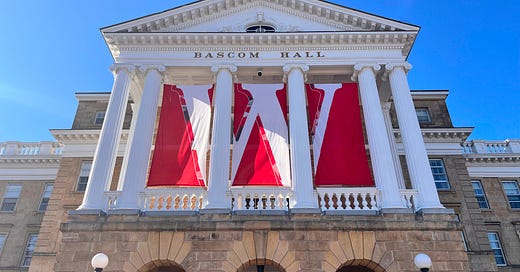For decades, UW-Madison has been the premier educational destination for Wisconsin residents. However, in-state enrollment has steadily declined to about 45%, starkly contrasting with the school’s past and other state schools. Most UW System schools enroll primarily Wisconsin students, such as UW-Oshkosh (92%) and UW-Milwaukee (80%). Despite being Wisconsin’s flagship public university, UW-Madison’s shifting student body raises questions about its commitment to in-state students.
The Economics of Enrollment
The disparity in tuition fees highlights a key financial strategy for UW-Madison: out-of-state students pay $42,000 annually, compared to $11,000 for Wisconsin residents. This revenue helps offset operational costs, contributing to UW-Madison’s financial strength but shifting focus away from local students. Meanwhile, UW-Madison receives the highest per-student taxpayer funding in the UW System, over $10,000 per student, compared to about $5,000-$8,000 at other campuses. This reliance on non-resident tuition and public funding raises questions about UW-Madison’s financial priorities.
Legislative Perspective
In a telephone interview, State Representative Dave Murphy (R-Greenville) attributed the funding disparity within the UW System to UW-Madison’s uniquely expensive academic and professional programs, such as state-of-the-art law and medical schools. He also noted the lack of transparency in how state funds are allocated, as universities ask the government for funds, then receive these funds without being required to disclose spending plans. Concerning admissions practices, he said that merit and success of students should take priority over having an artificially diverse student body.
The Wisconsin Guarantee: Is It Enough?
The Wisconsin Guarantee ensures admission to a UW school for high-achieving in-state students, but the flagship university has stricter criteria. Most UW schools guarantee admission for students in the top 10% of their class or with strong ACT scores at or above 90th percentile, but UW-Madison only guarantees admission to the top 5% or those with ACT scores in the 98th percentile who apply by the early action deadline. These added barriers may exclude qualified Wisconsin students who narrowly miss these thresholds. Representative Murphy supports merit-based admissions and scholarships, but acknowledges the debate over prioritizing Wisconsin students.
Should Wisconsin Follow Other States' Solutions?
The University of Texas-Austin follows a Texas state law that guarantees admission to Texas students in the top 6% of their class, prioritizing in-state residents while ensuring access. Under this same state law, 90% of first-year students must be from Texas and 75% of them must be automatically admitted. The rest of the students are admitted through holistic review. The law requires the university to set the threshold for automatic admission annually. However, critics argue this law limits diversity beyond academics.
The Game of Admissions: Who Has the Advantage?
Wisconsin students had a 70% acceptance rate in 2023, compared to 18% for out-of-state applicants for UW-Madison. Critics argue that students from states with weaker public universities may struggle to gain admission, raising concerns about fairness in the admissions process. Representative Murphy says it should not be Wisconsin’s problem to make up for what other states are lacking in their public university systems.
The Future of UW-Madison
As UW-Madison navigates financial sustainability and its mission as a public institution, the debate continues: Should it prioritize in-state students, ensuring taxpayer dollars benefit Wisconsin residents, or maintain its focus on out-of-state and international enrollment for financial and academic diversity? This tension challenges UW-Madison to define its identity—a state university for Wisconsinites or a globally competitive institution. Ultimately, whose university is UW-Madison today?






